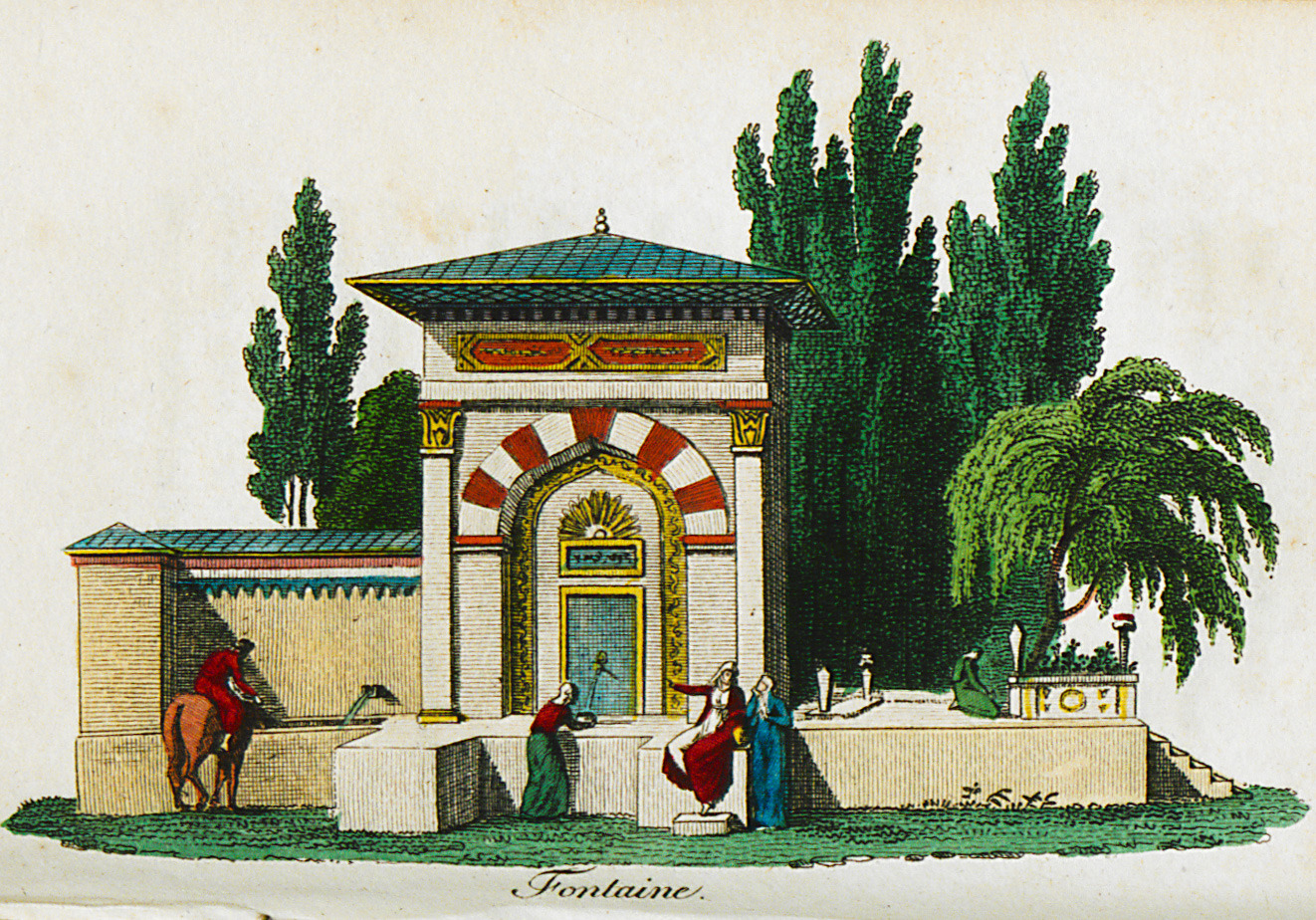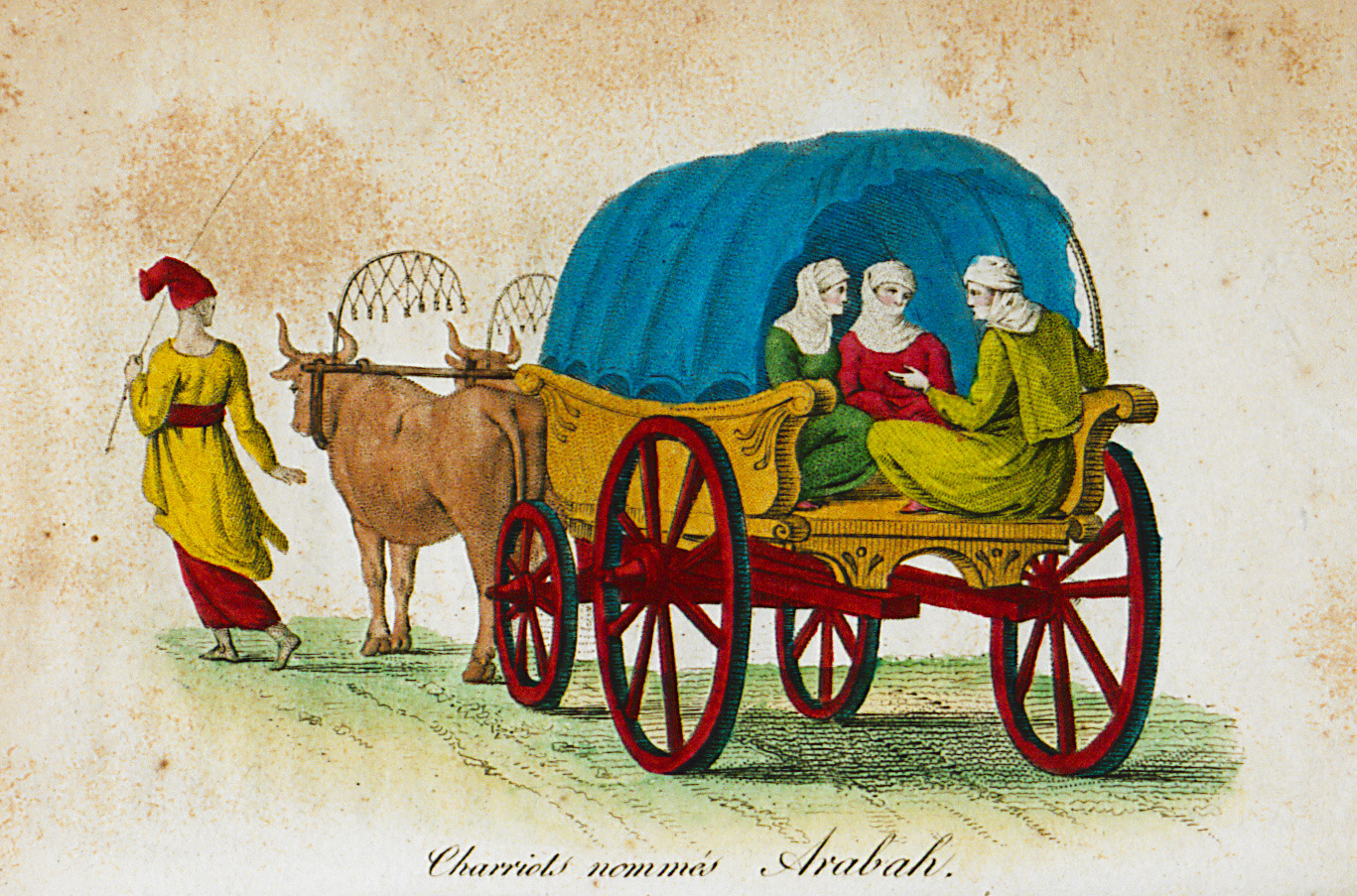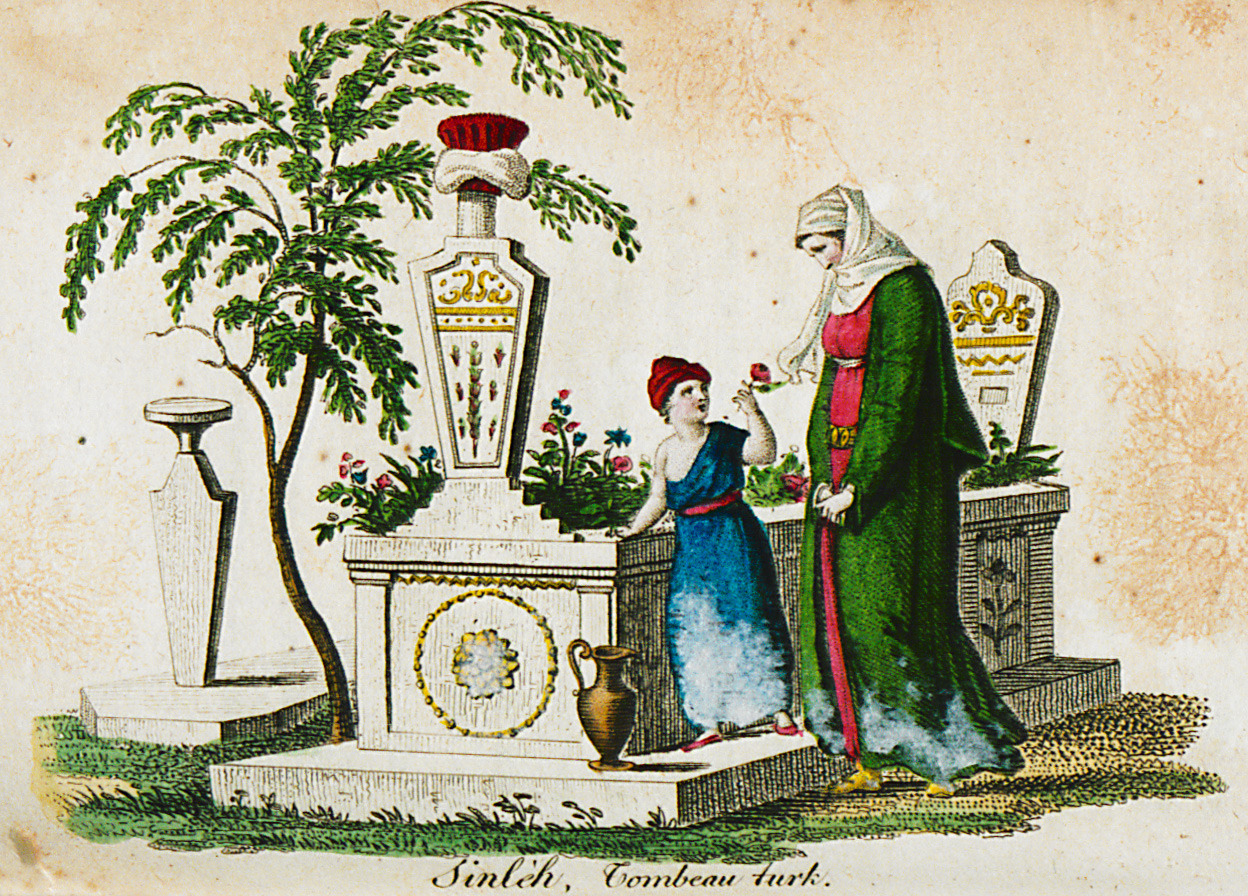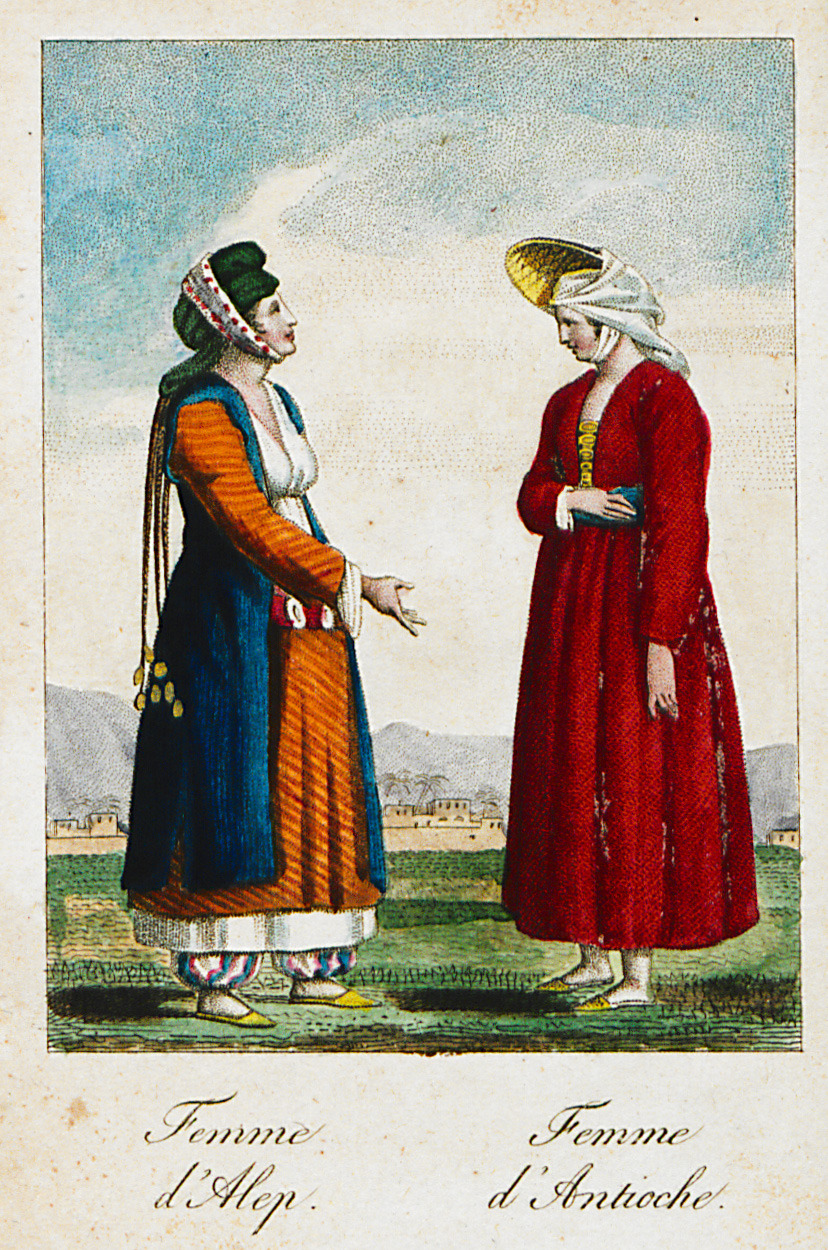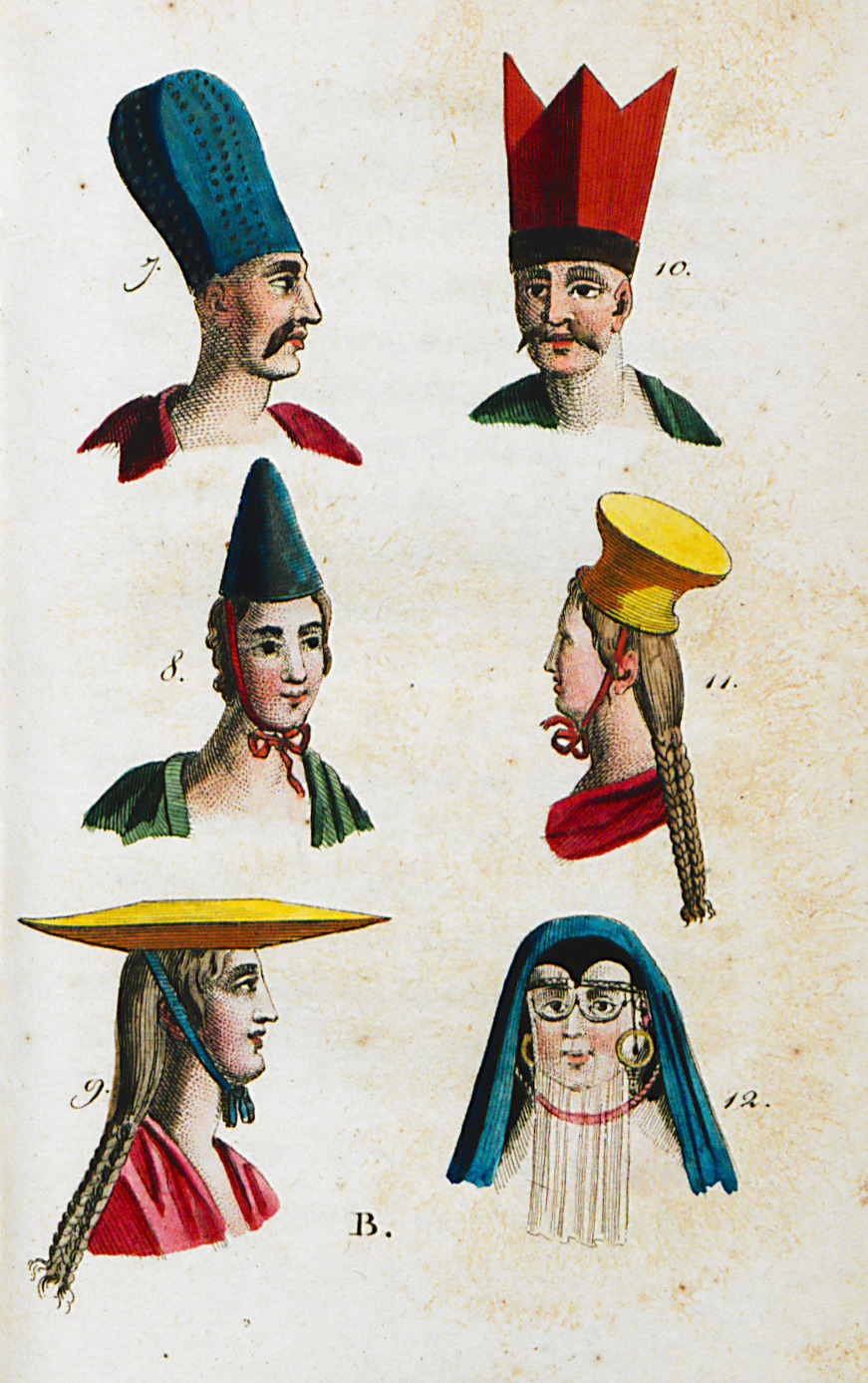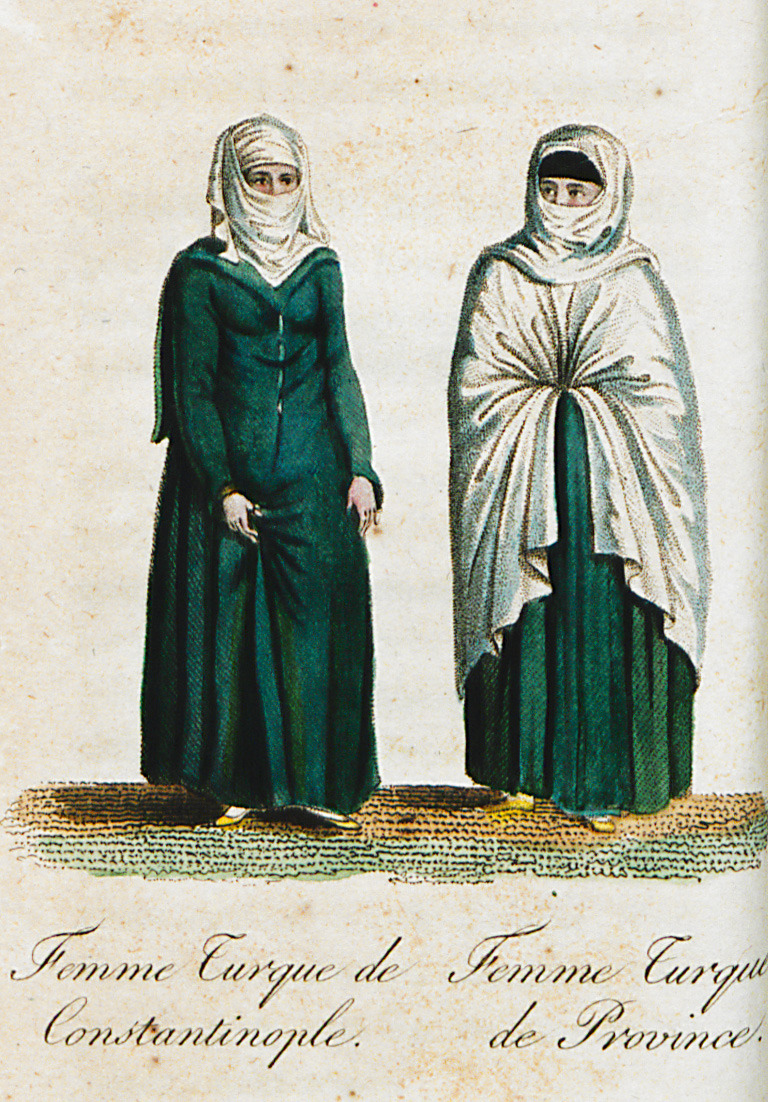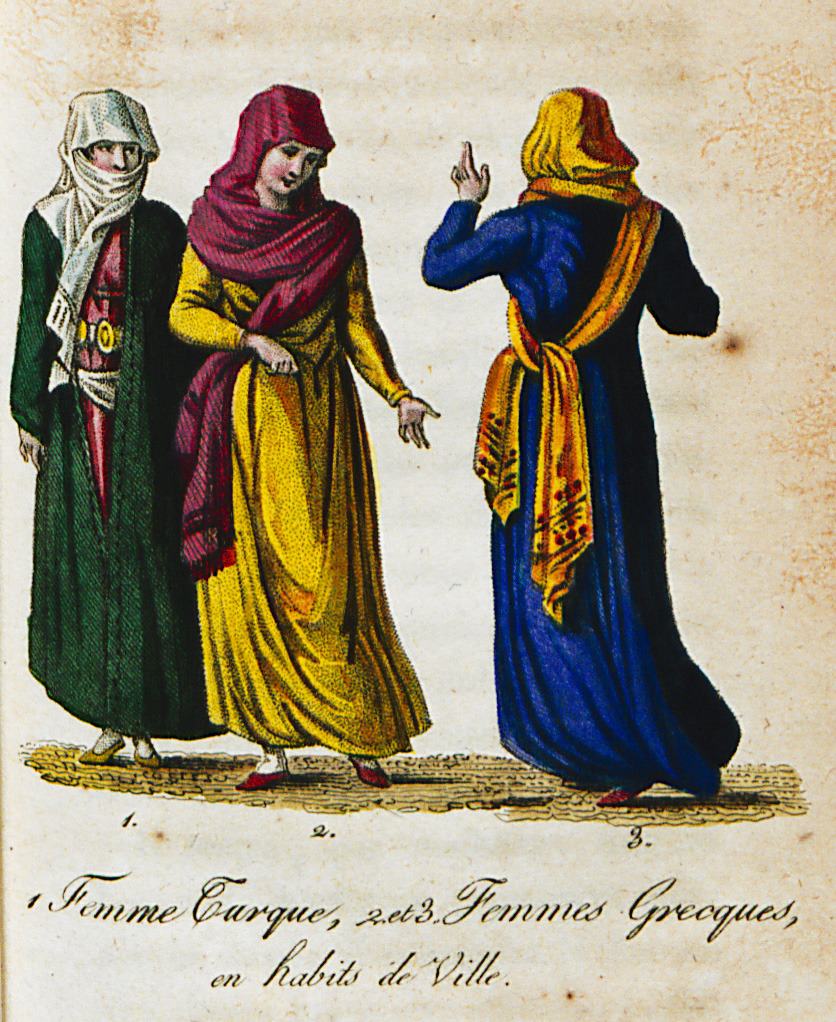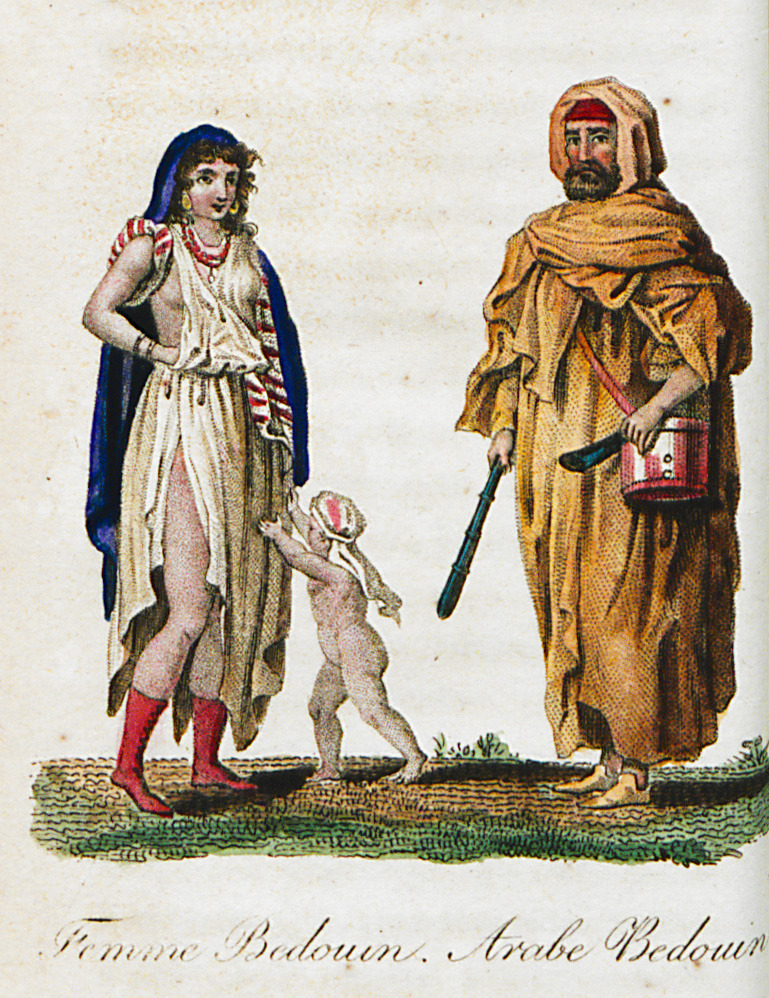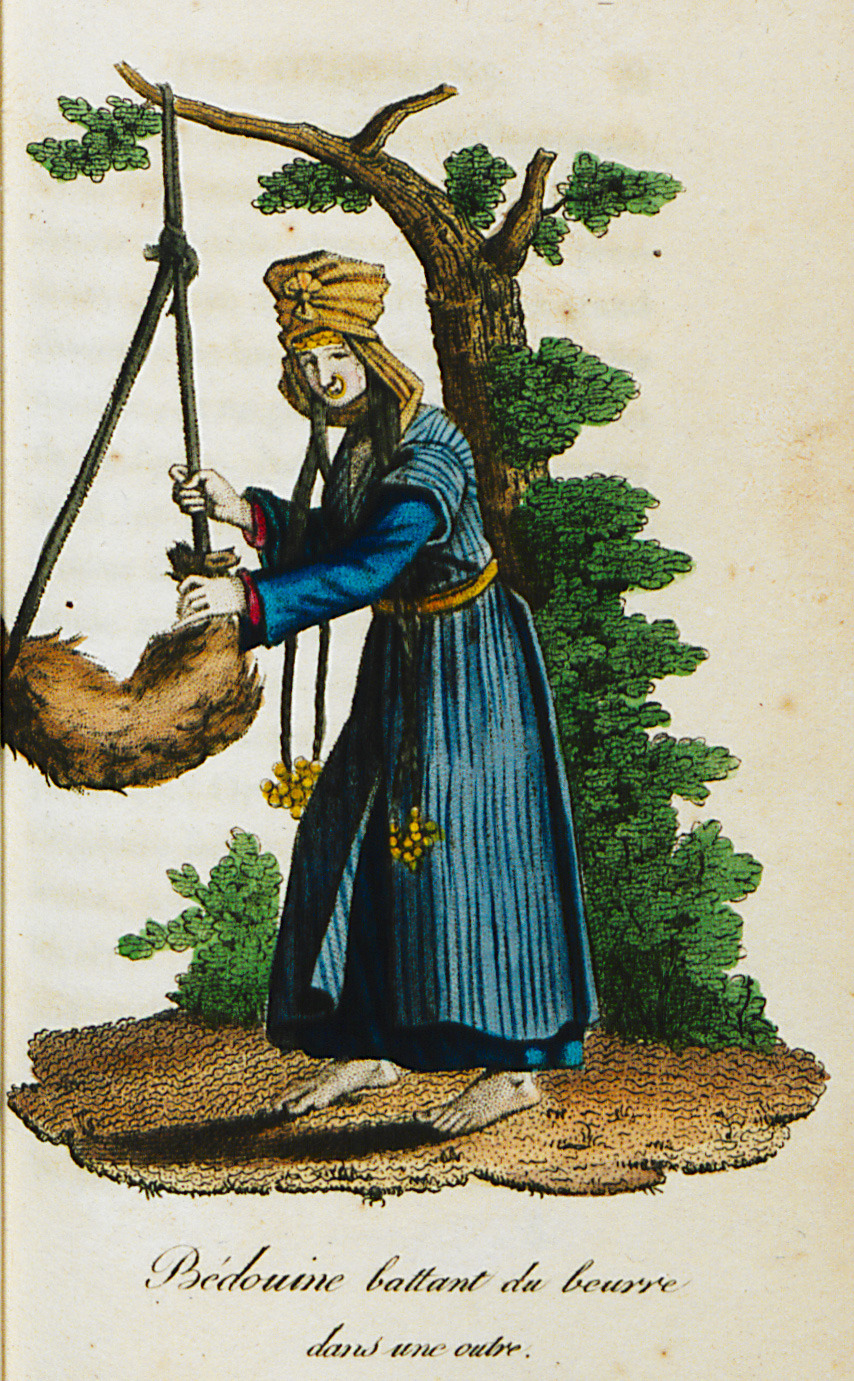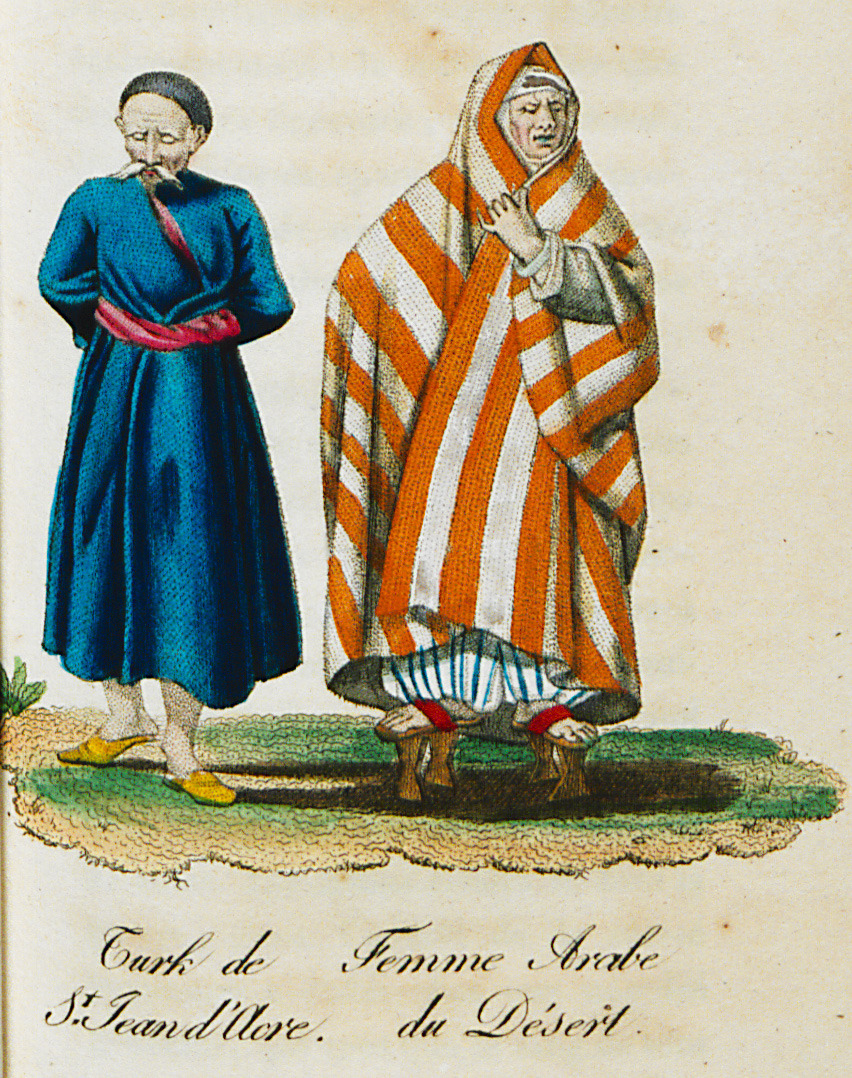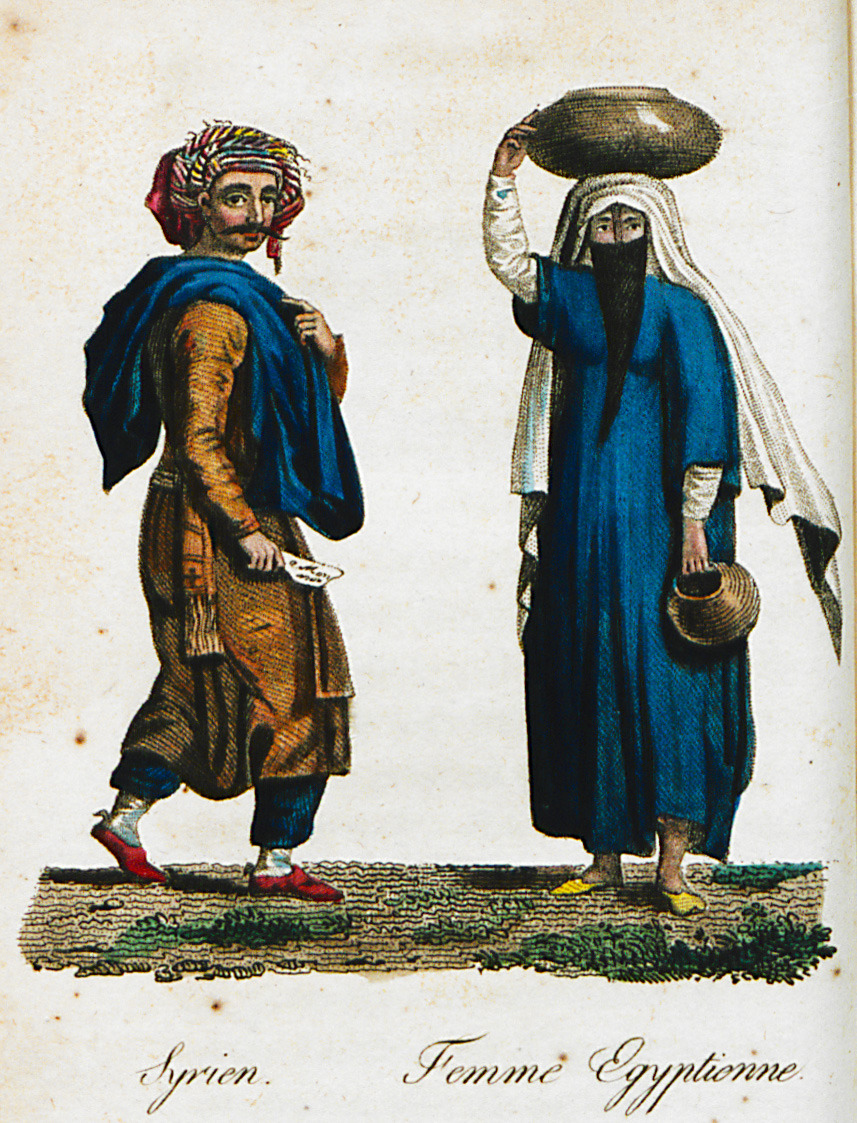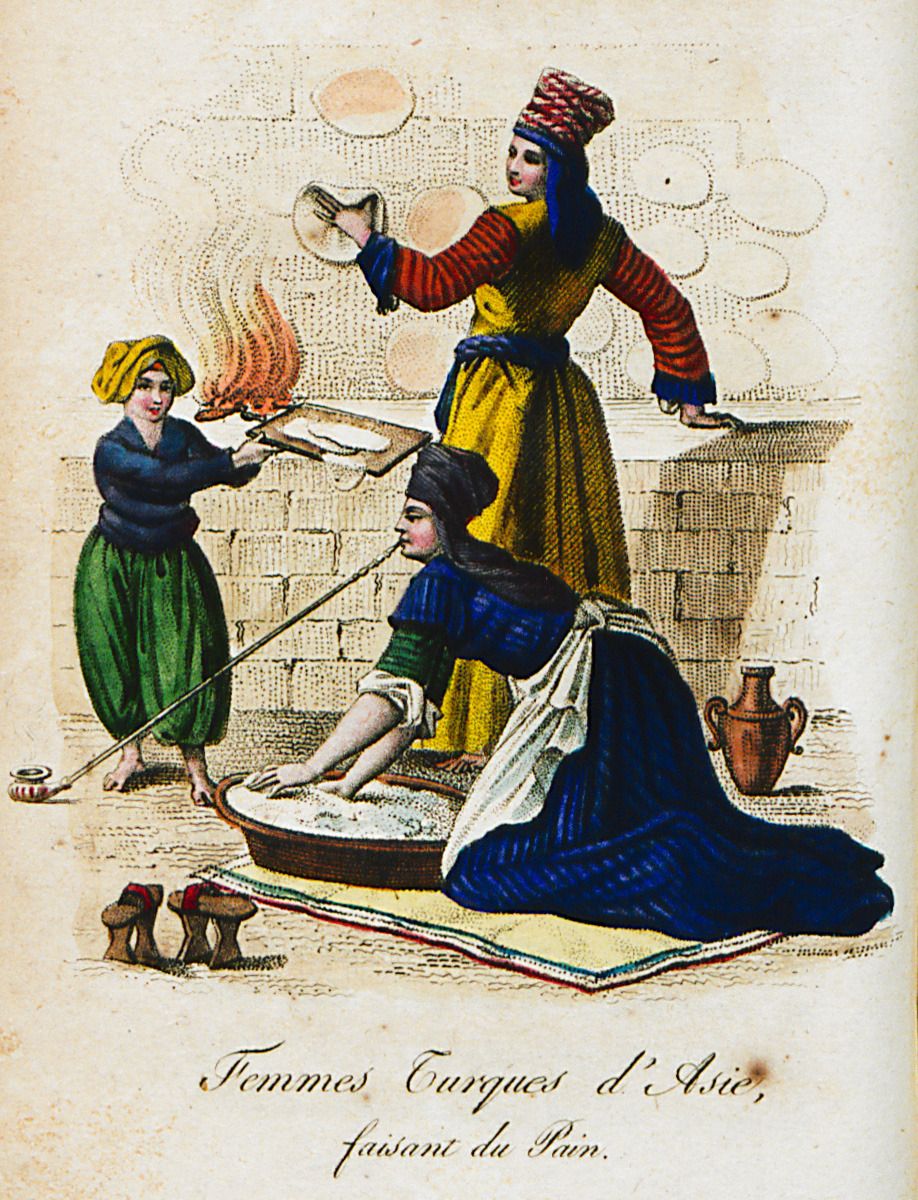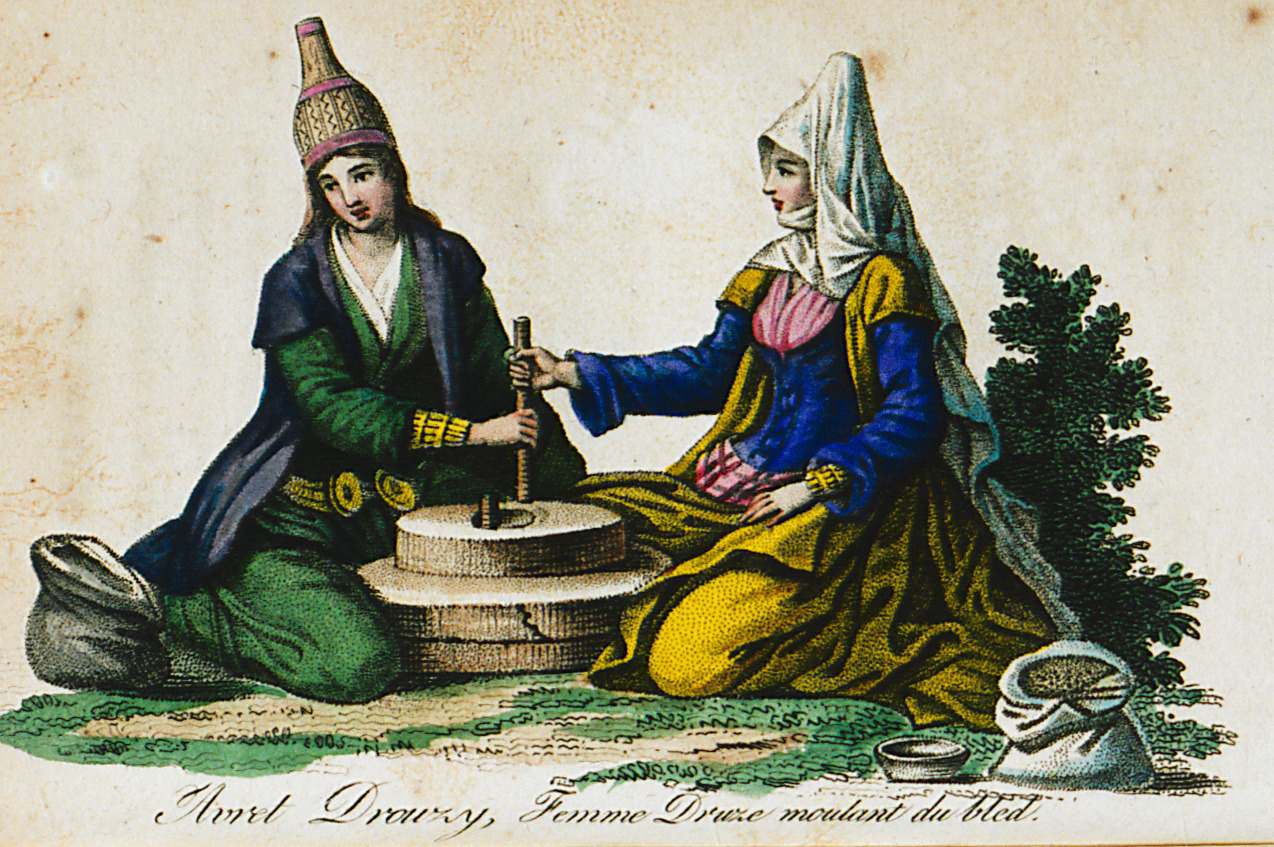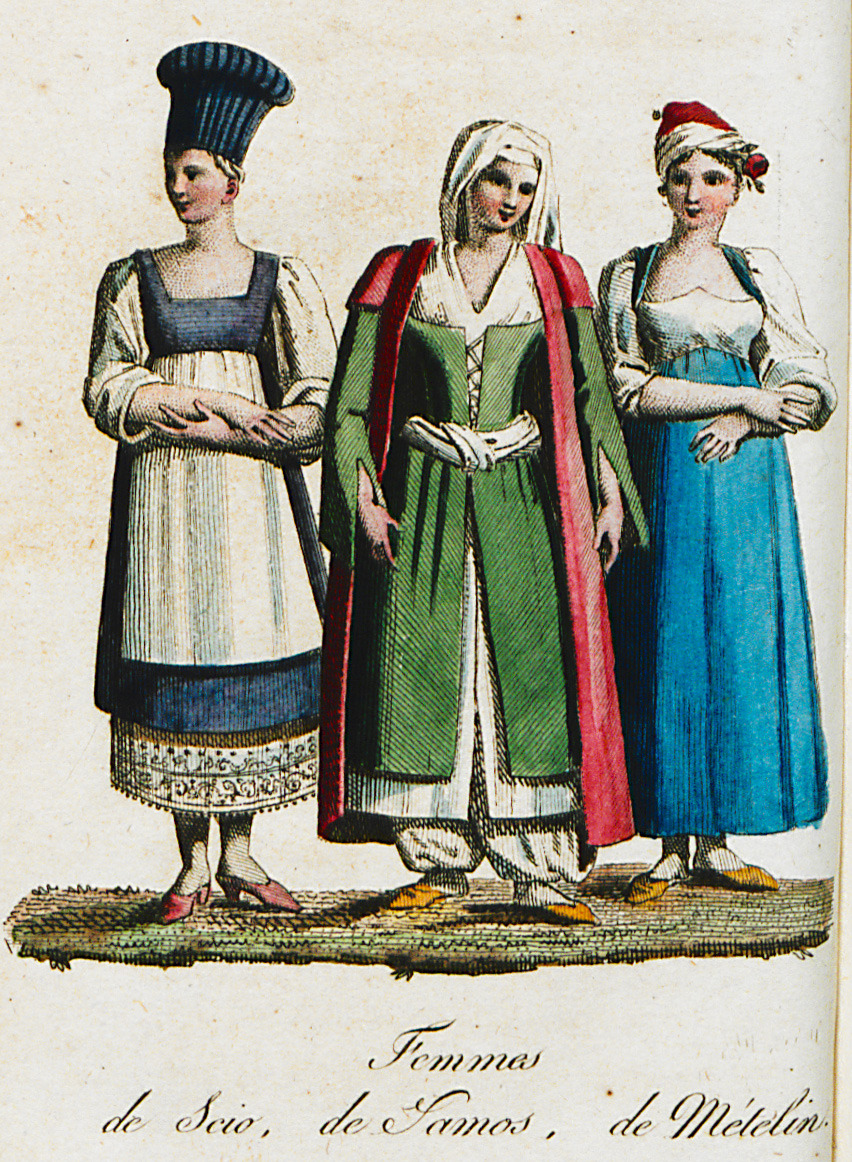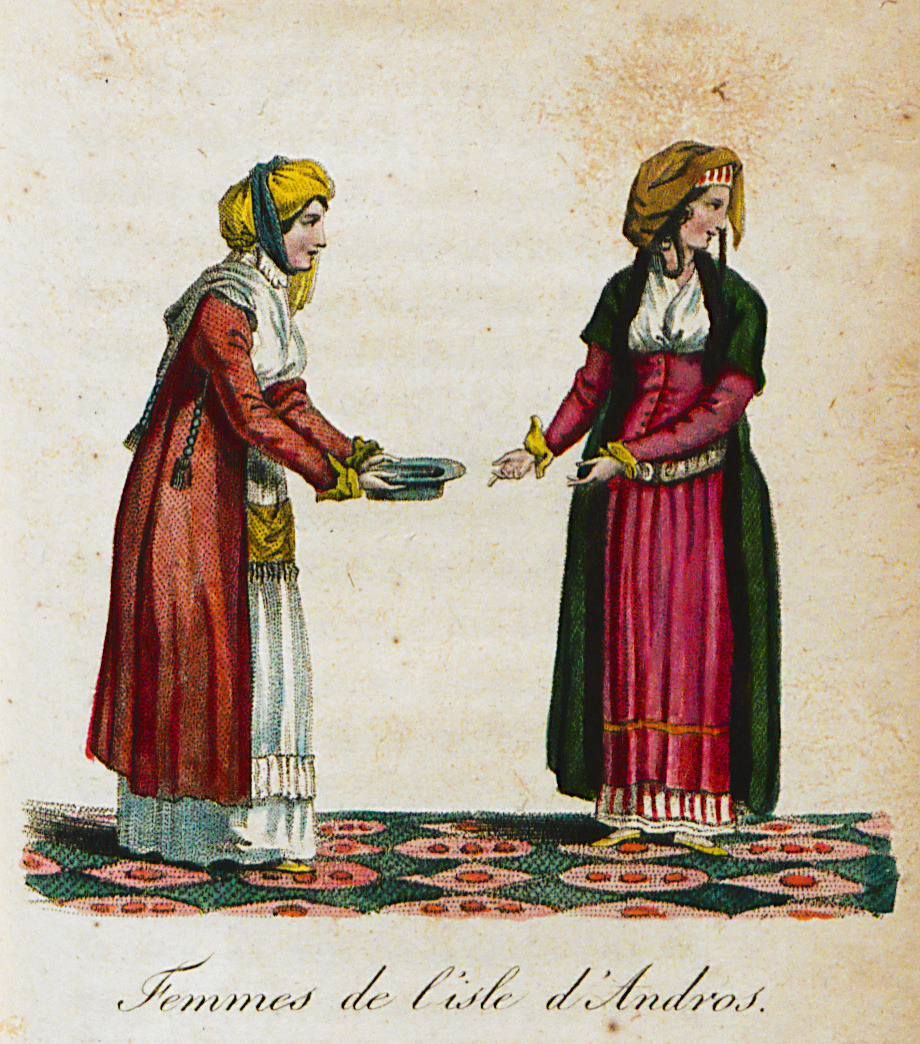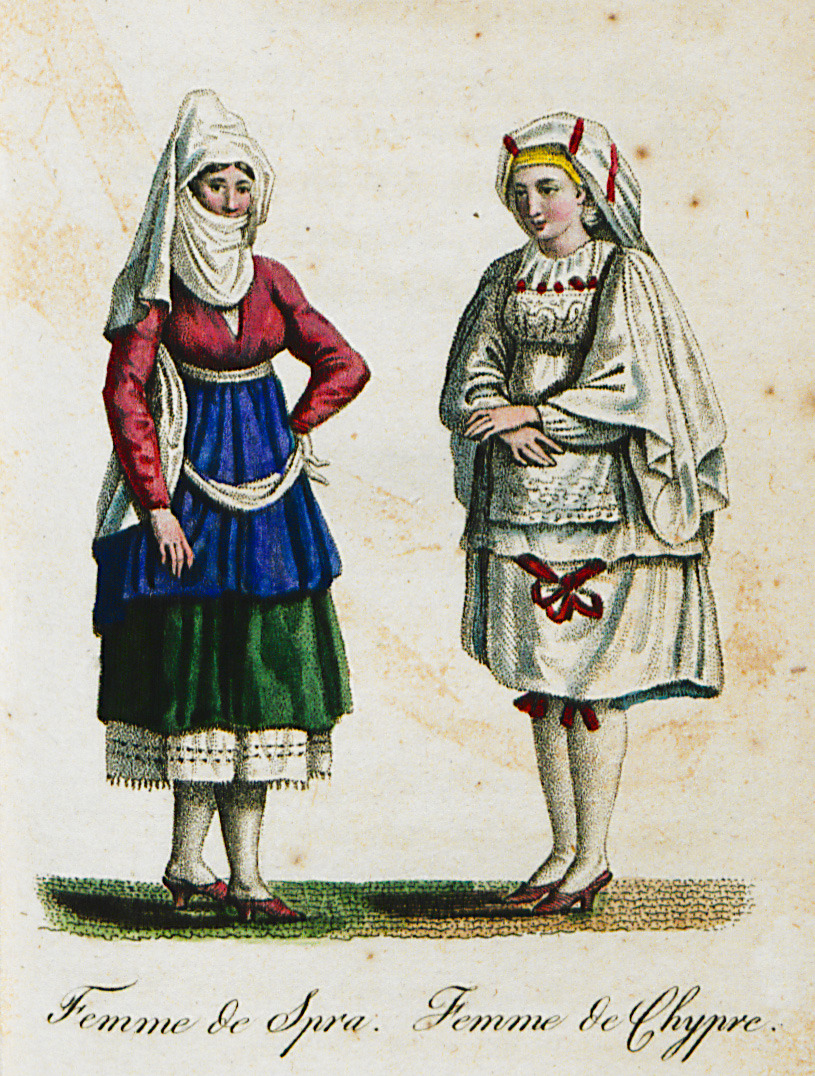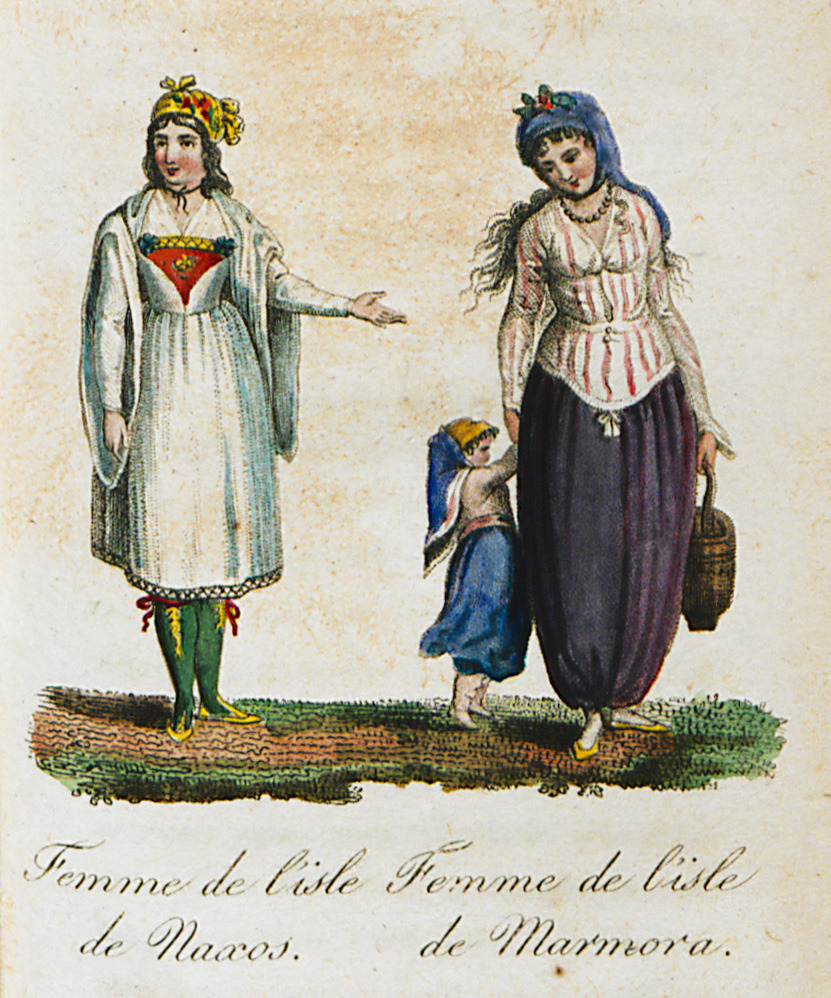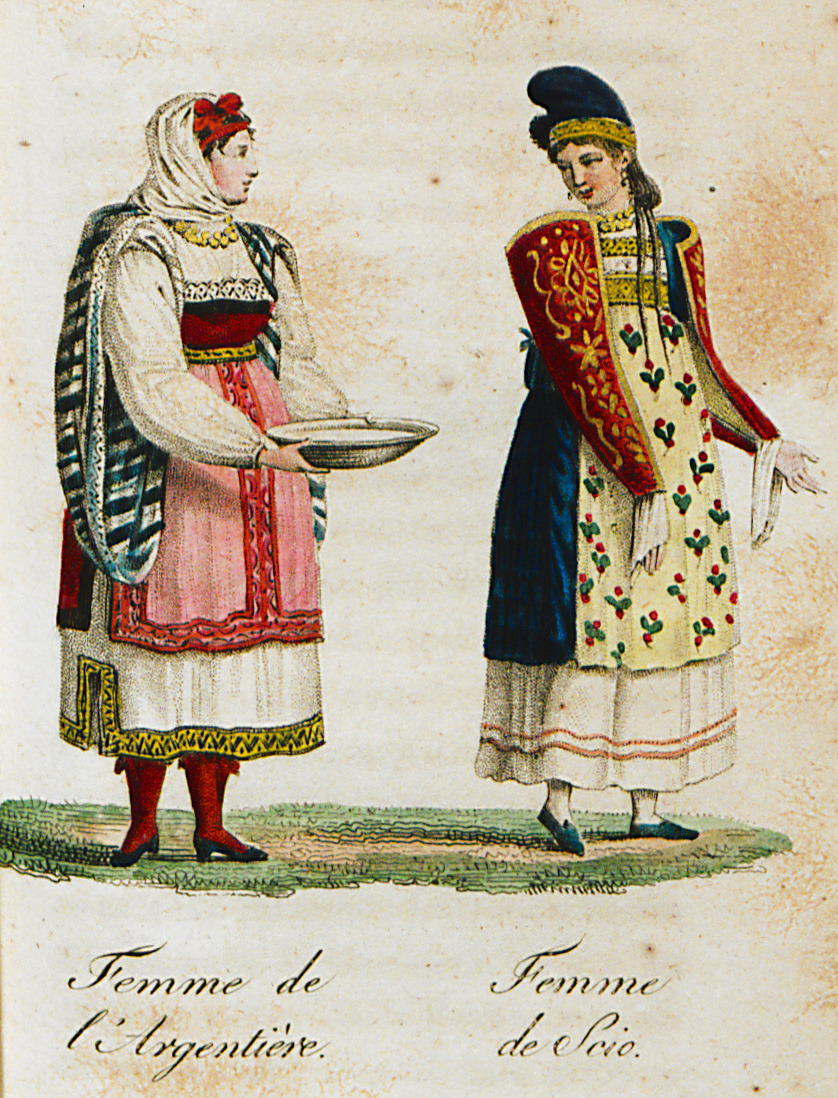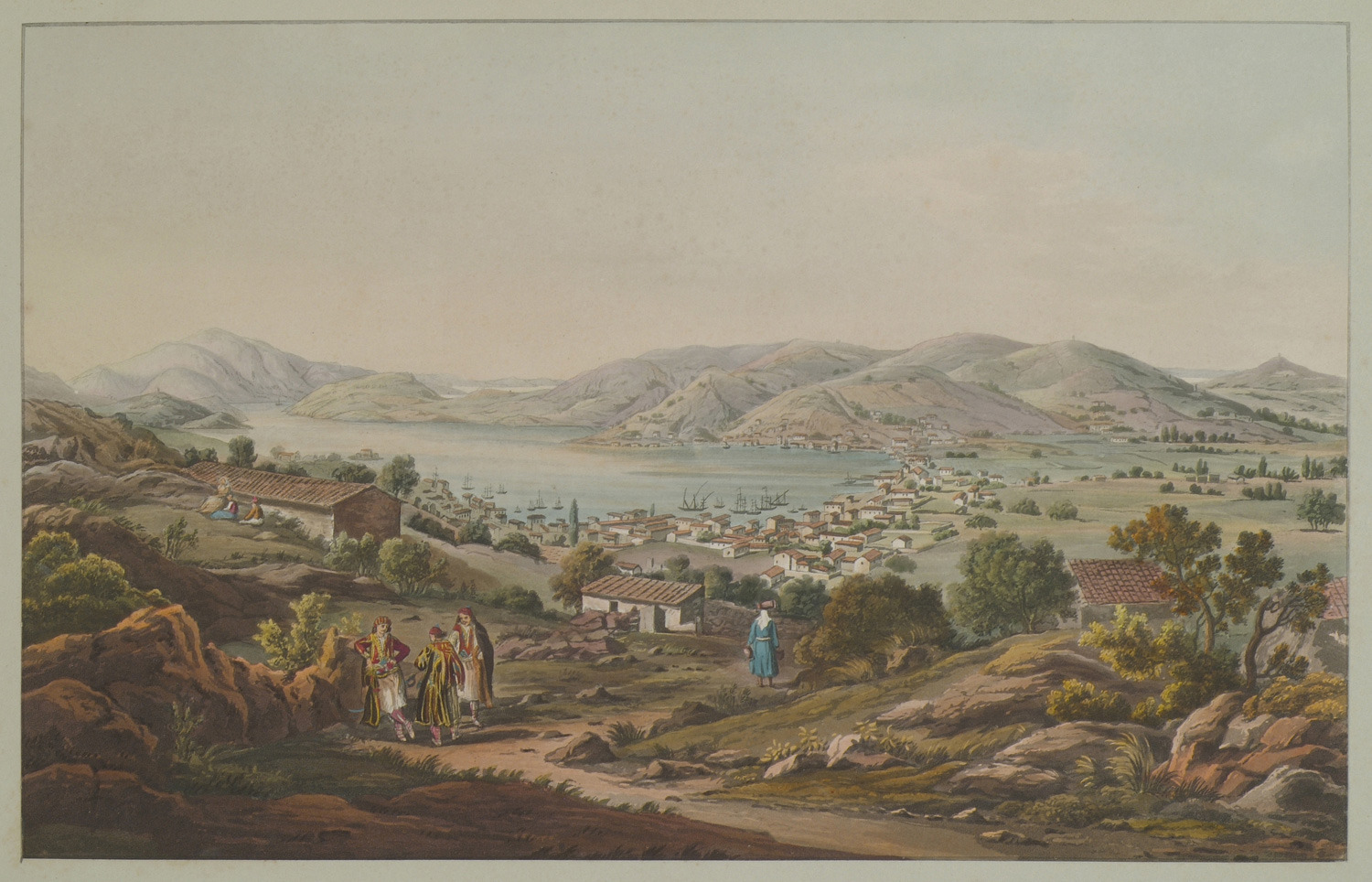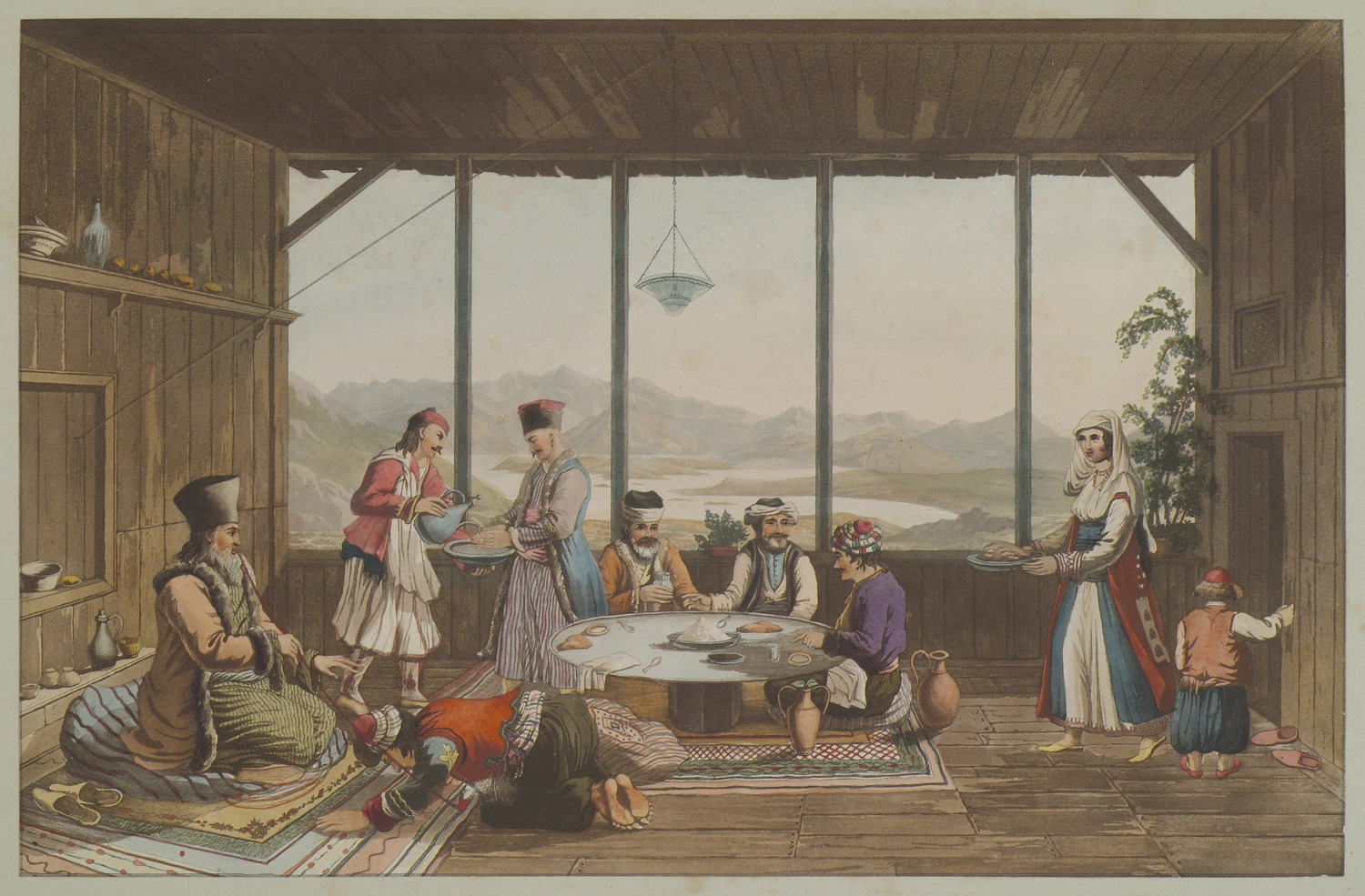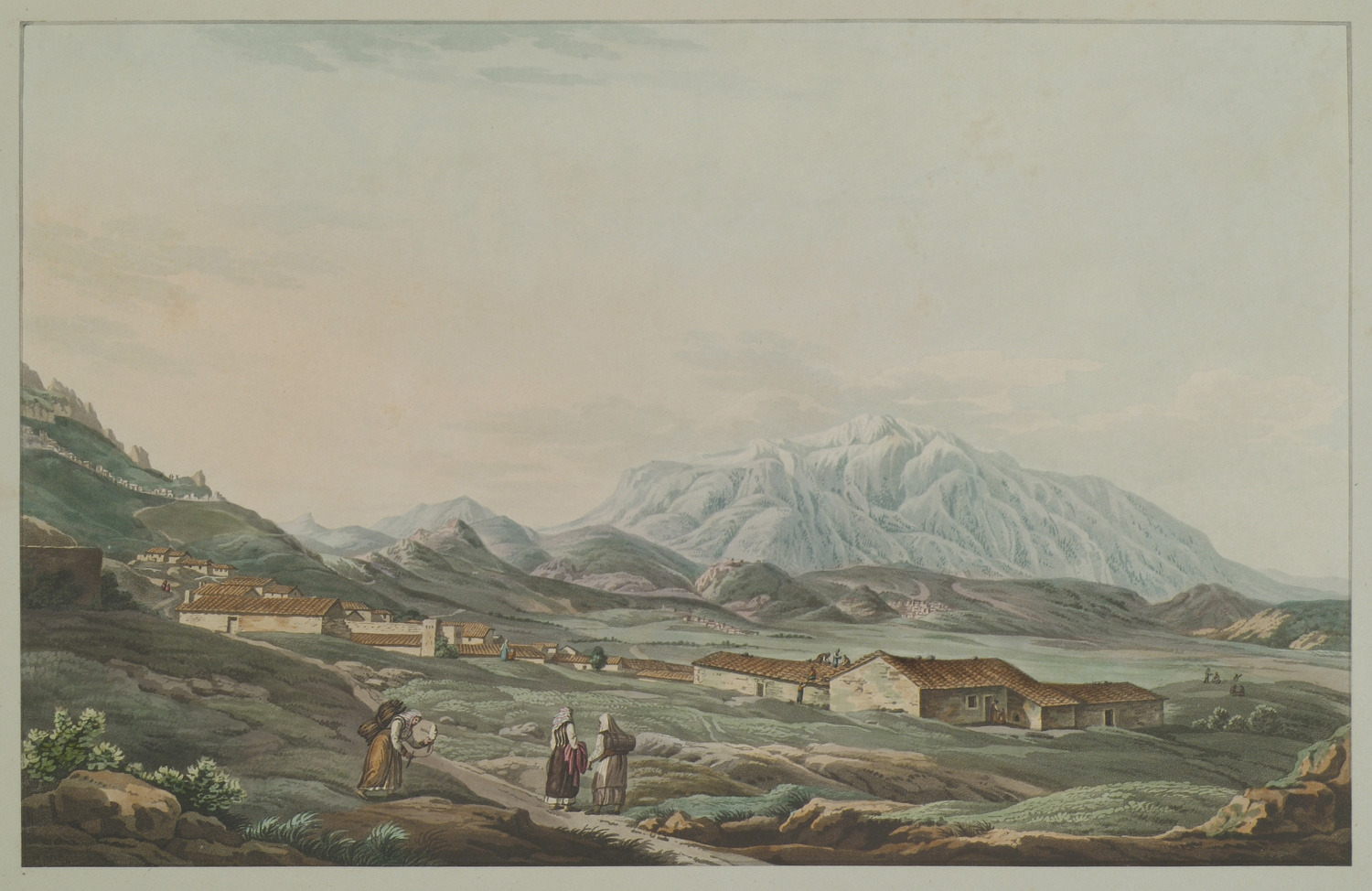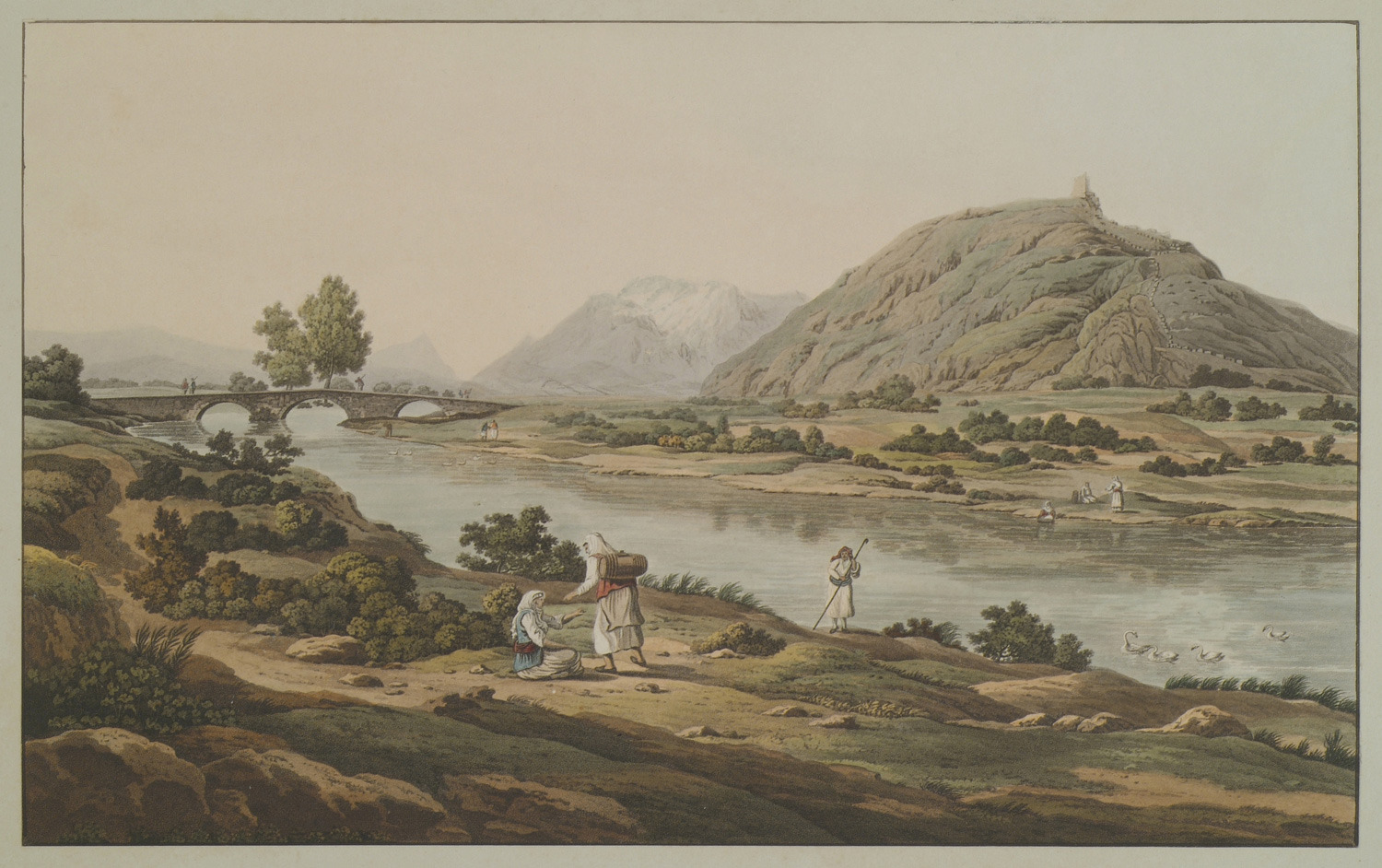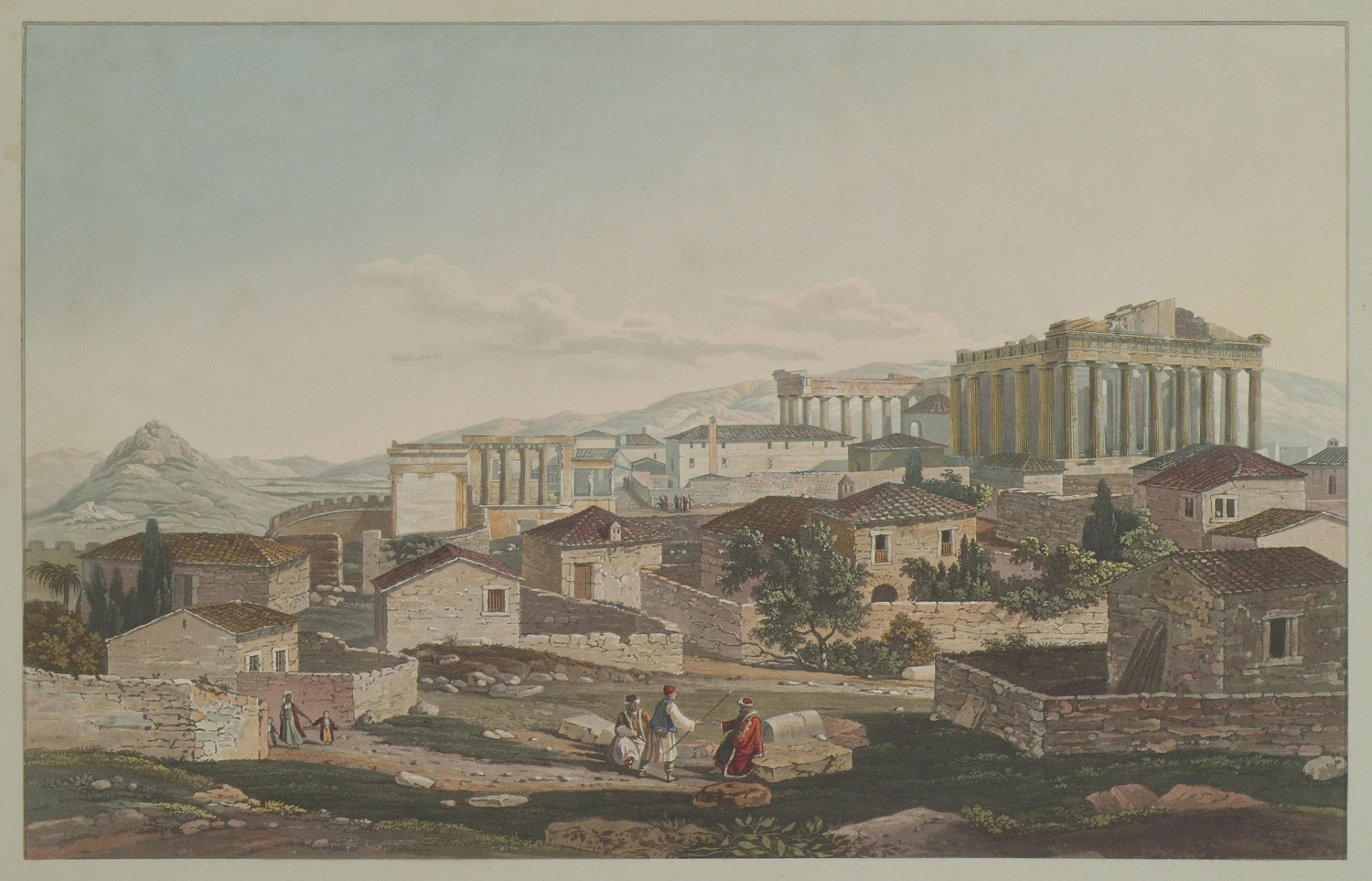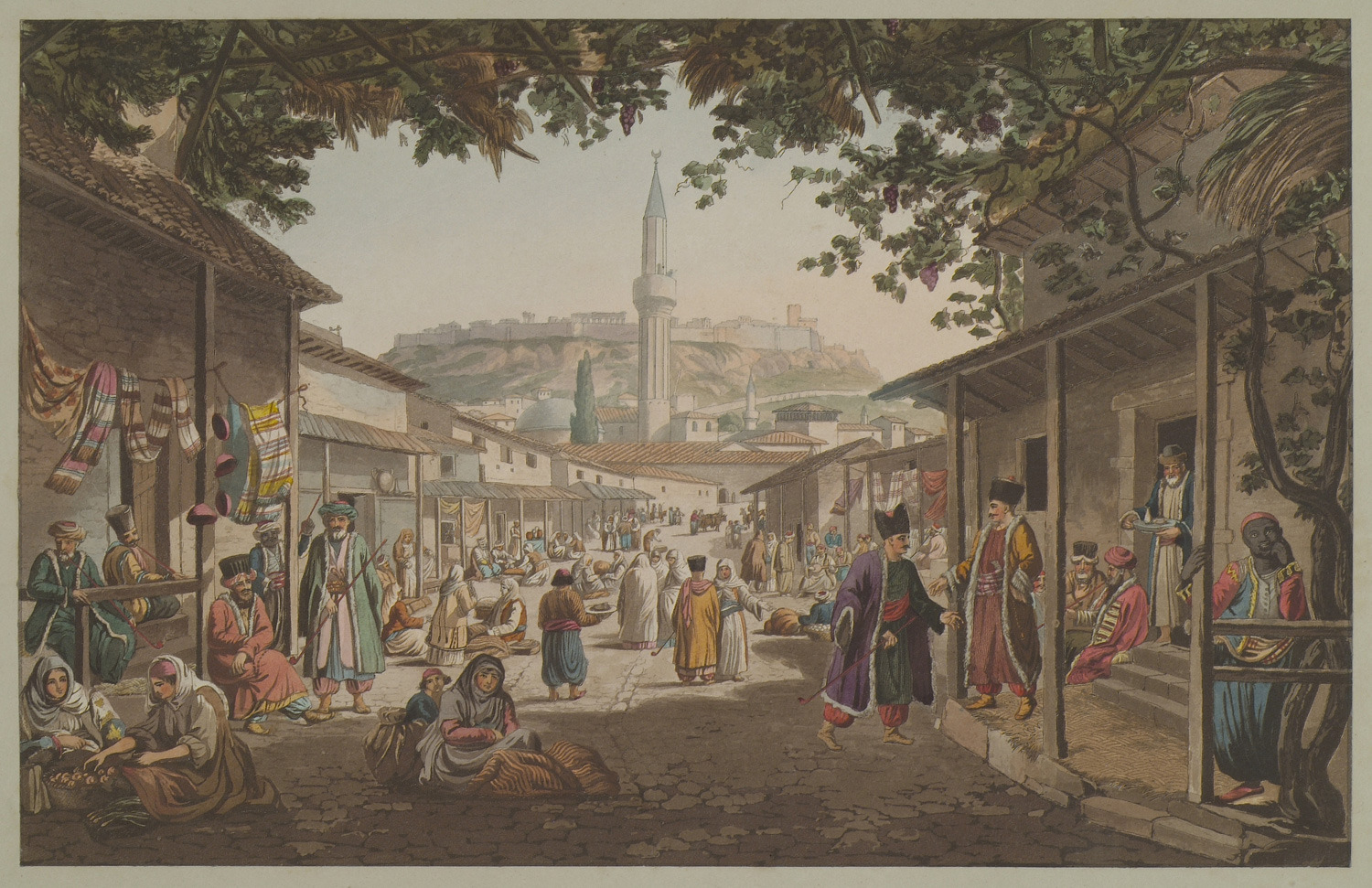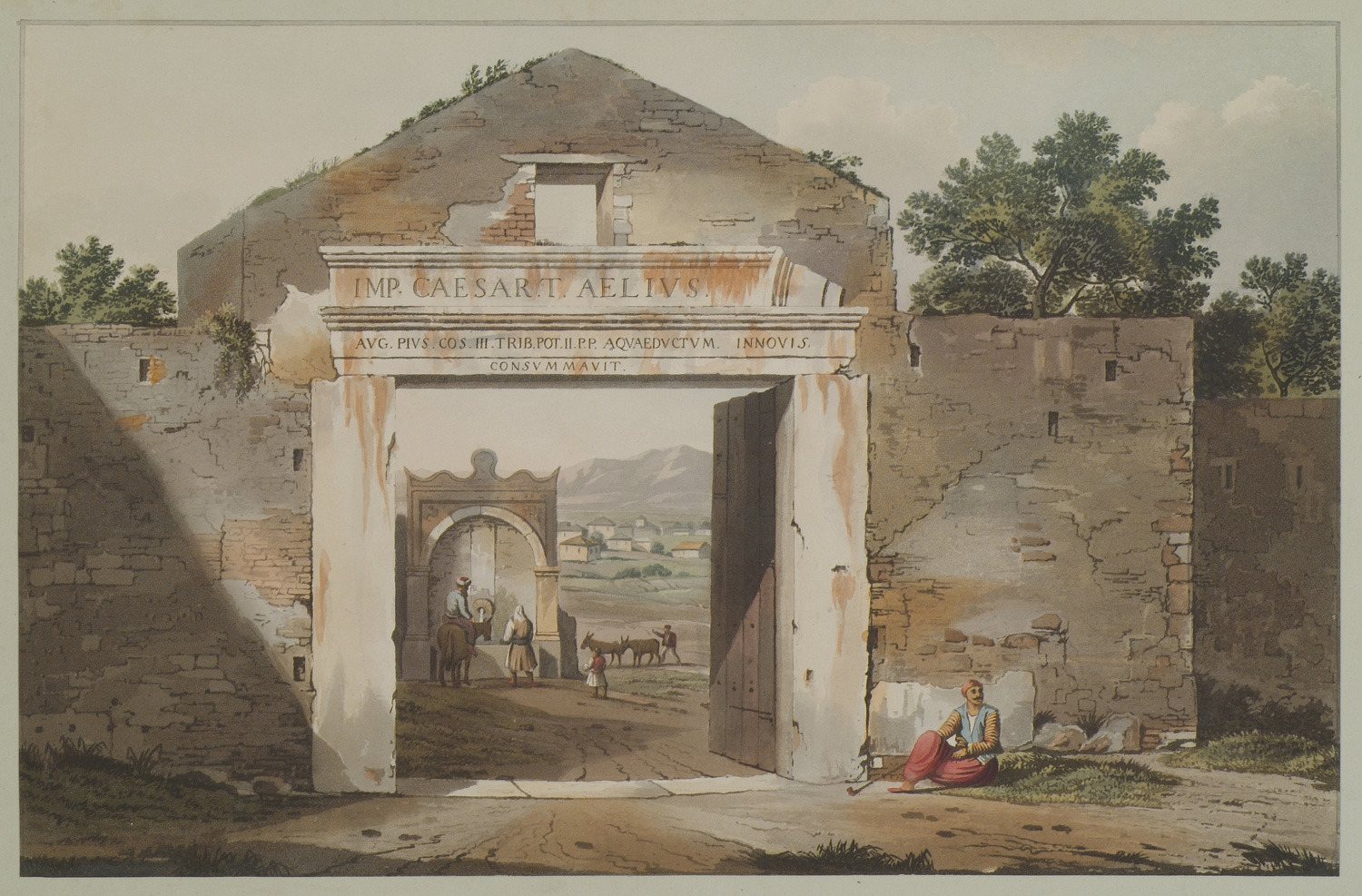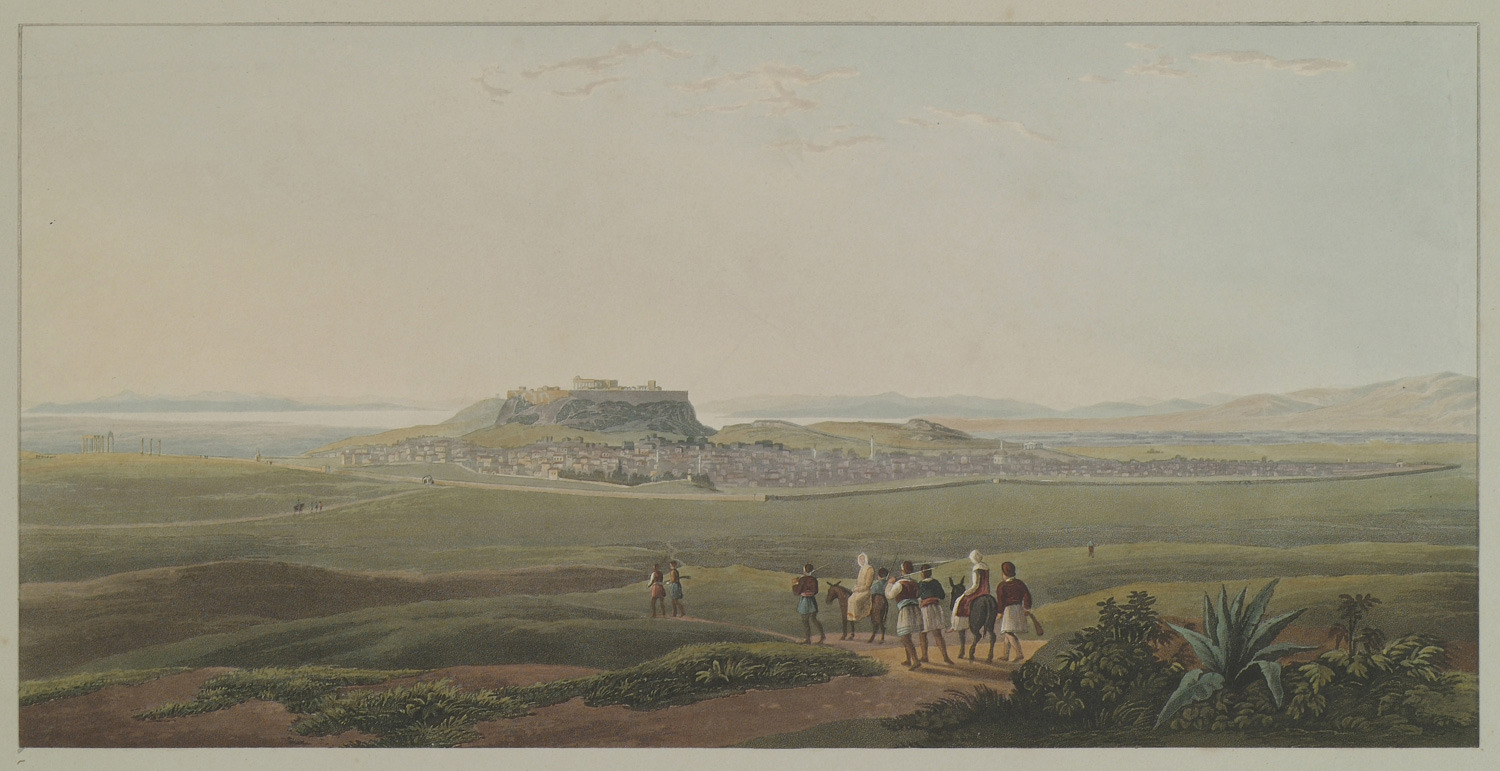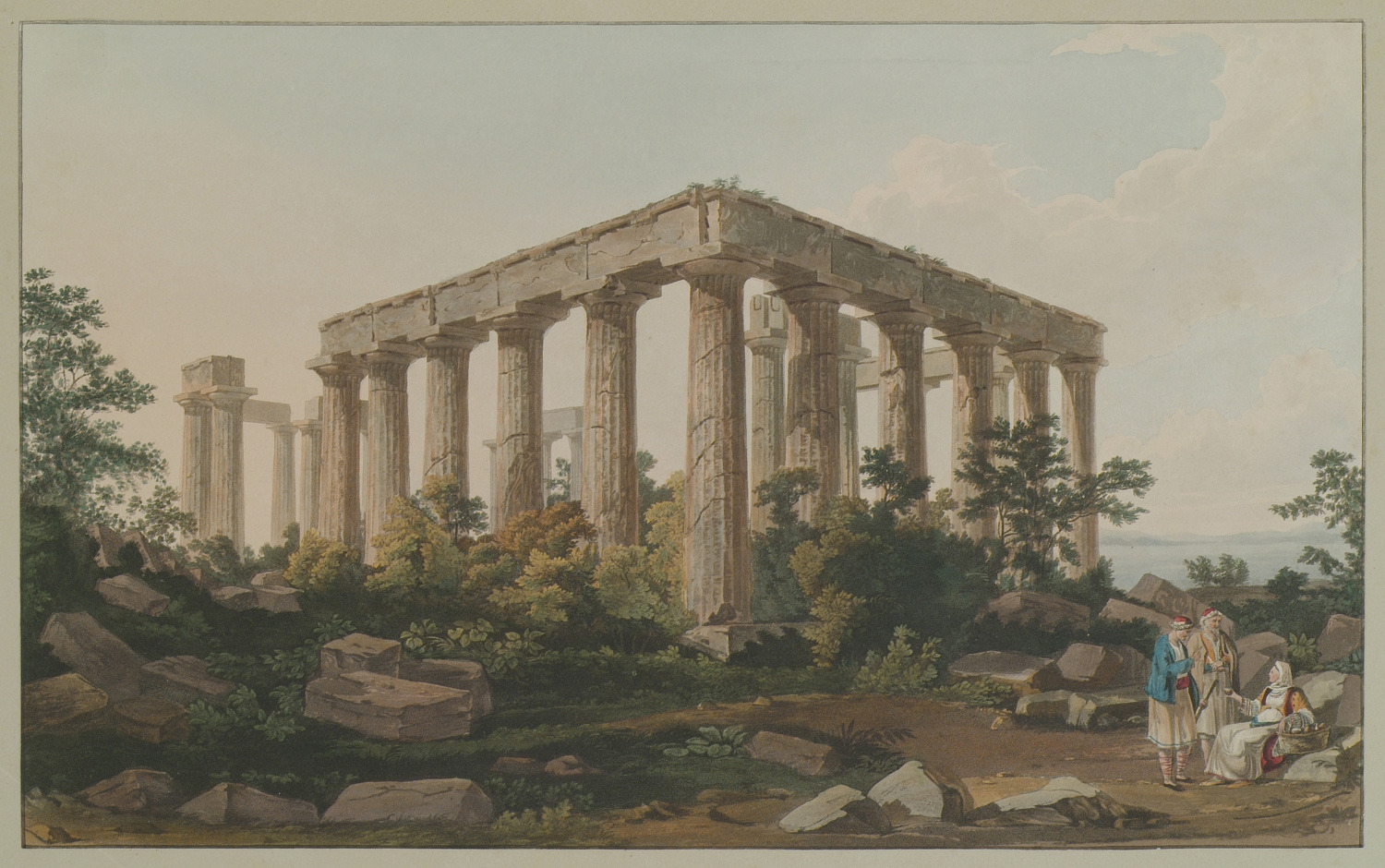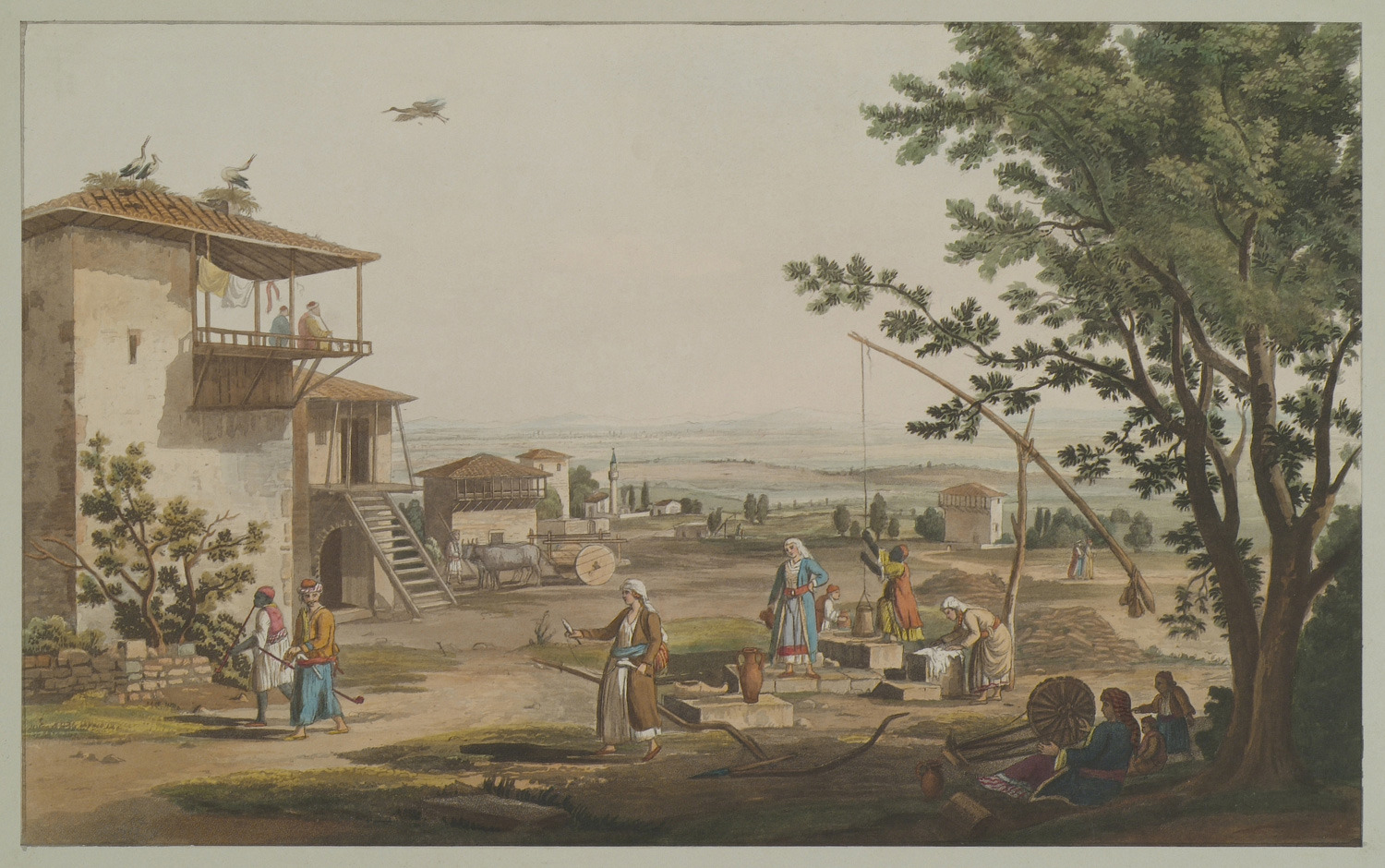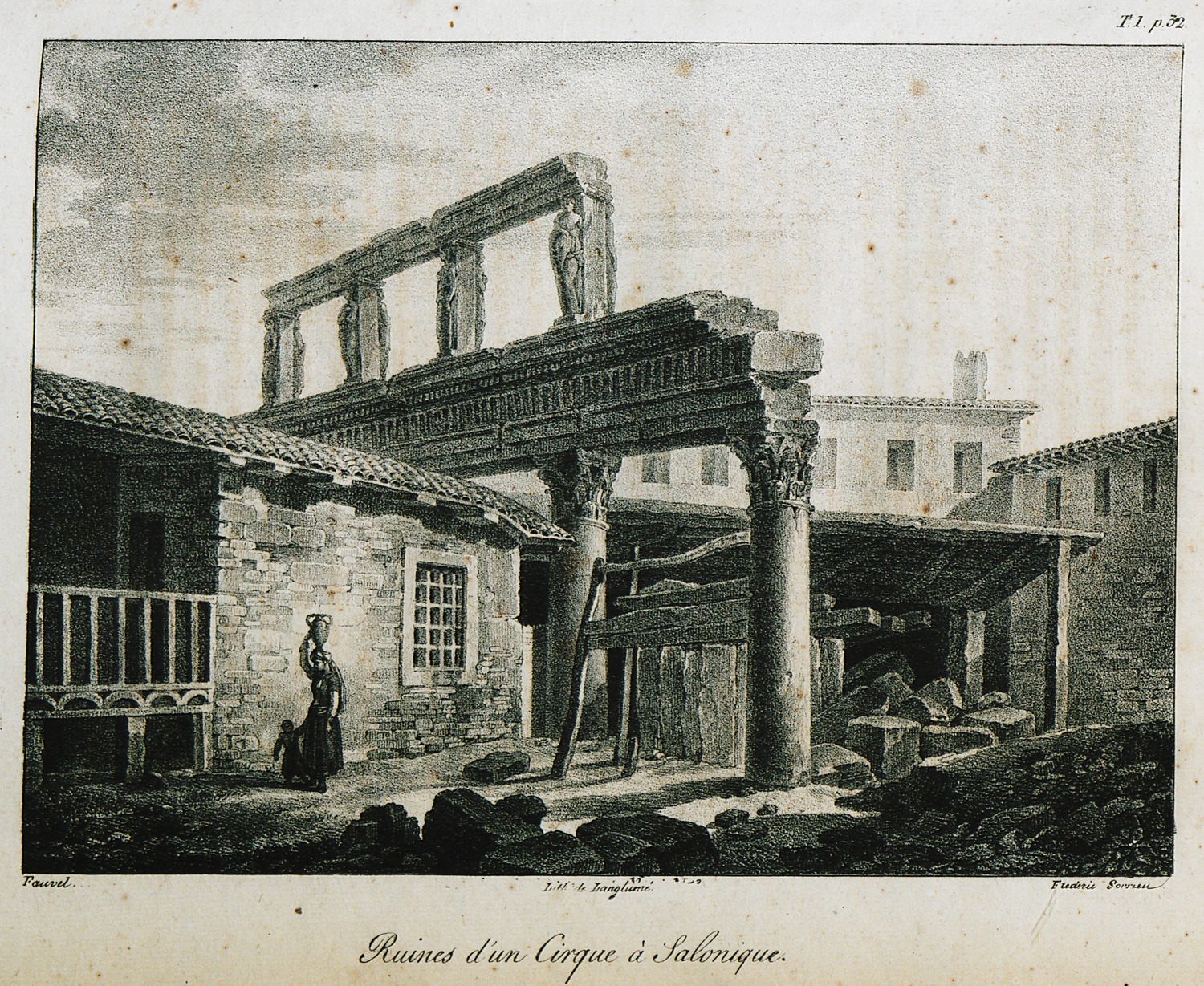Women (1824 Subjects)
An Ottoman fountain.
An Ottoman carriage.
An Ottoman tomb.
Frontispiece to the sixth volume of the edition. A woman from Aleppo and a woman from Antioch.
Ottoman headwear, indicative of social class, profession and/ or ethnic group.
A Turkish woman of Istanbul in promenade costume. A Turkish woman from the ottoman provinces in promenade costume.
1. Turkish woman from Istanbul in promenade costume. 2, 3. Greek women of Istanbul in promenade costume.
Bedouin woman. Arab Bedouin man.
Bedouin woman making butter.
A Turkish man from Acre (today in Israel). A Muslic woman of the desert, of Arabic ethnicity.
An Arab from Syria. A Muslim woman of Arabic ethnicity from Egypt.
Turkish women of Asia Minor making bread.
Druze women of Syria grinding flour.
Albanians.
Women from Chios, Samos and Lesbos.
Women from Andros.
Woman from Syros. Woman from Cyprus.
Woman from Naxos. Woman from the island of Marmara.
Woman from Kimolos. Woman from Chios.
Panoramic view of Ithaca with the port and town of Vathy.
Dinner at Crisso, in the house of the bishop of Salona.
Parnassus mountain.
The site of the acropolis of Orchomenos in Boeotia, on Cephisus river, from the south. Arvanite women occupied in agricultural tasks.
The west front of the Parthenon and the Erechtheion, from the Propylaea.
The bazaar of Athens. On the forefront, on the right, an emancipated African slave. On the doorway, the owner of the coffeehouse who is brigning a tray with coffee to the Ottoman governor Disdar Aga. Disdar Aga is sitting on the stairs, dressed in red, and next to him sits another Turkish aga. Standing at the entrance of the coffeehouse, the Greek voivode (governor) of Salamis island, who is conversing a Greek Baratario (protegé of a foreign power). At the centre of the picture, three Turkish women covered with long white veils. According to Edward Dodwell's description, the rest of the women depicted are Arvanite. Standing, on the right, a devout Muslim in green costume, an indication that he has made the pigrimage to Mecca.
The Gate of Mesogeia or Gate of Boubounistra, which was situated at the present-day junction of Amalias avenue with Othonos street. In the background, the fountain of Boubounistra.
Athens from the feet of Lycabettus Hill.
The temple of Aphaia on Aegina island. The peasants who supplied the travellers with provisions during the latter's stay at the site.
View of the plain of Larissa from settlement close to the city. Snapshot of everyday life at the village.
View of the sculptures at the southern entrance to the Roman Agora of Thessaloniki (Incantadas Monument).


